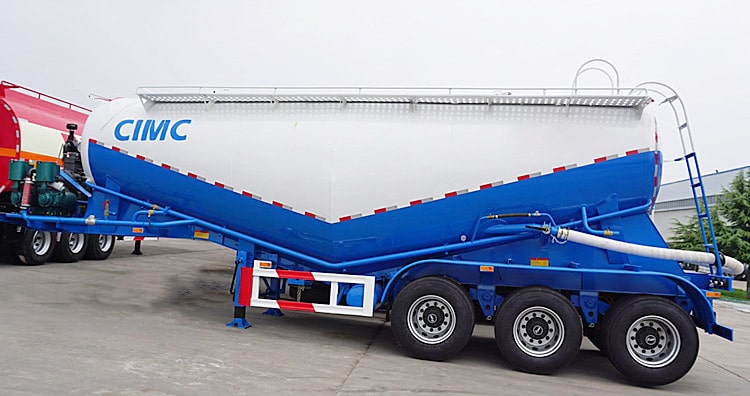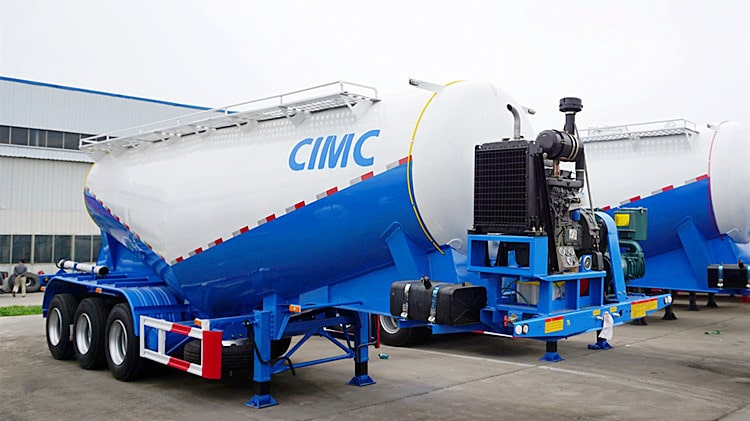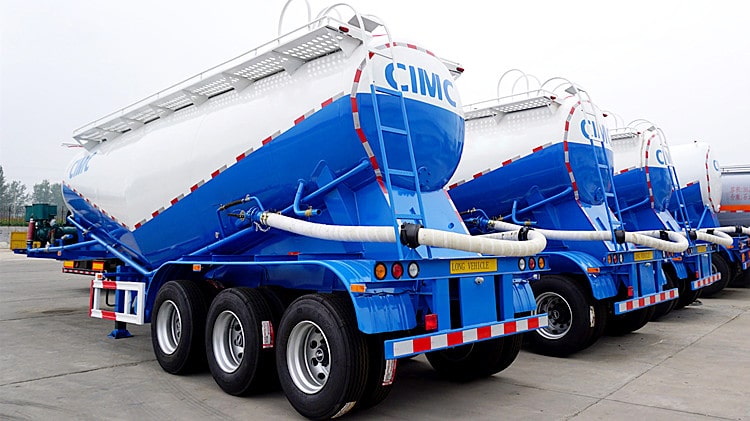 CIMC 50cbm Dry Bulk Tanker Trailer for Sale
CIMC 50cbm Dry Bulk Tanker Trailer for Sale
This customer from Mozambique bought a CIMC dry bulk tanker trailer several years ago, and this semi trailer is still in use by the customer. In recent years, customers have also bought semi trailers of other brands, but the quality is not very good. So this time the customer contacted the salesman who had been in contact with him again, and expressed that he wanted to buy two 50cbm dry bulk tanker trailers. After the sales and the customer confirmed the drawings of the semi trailer, the customer paid the deposit. After the factory was completed, it was sprayed according to the customer's requirements. The paint is finished, the color is as shown in the picture in the text, and the 3 axle dry bulk trailer will be shipped in a few days.
 CIMC 50cbm Dry Bulk Tanker Trailer for Sale
CIMC 50cbm Dry Bulk Tanker Trailer for Sale
1. Connect with the discharge pipe, put the sealing ring when connecting with the discharge pipe. Open the front and rear air inlet valves. Close the pressure relief valve, external air source valve, secondary blowing valve, and discharging butterfly valve.
2. Start the engine smoothly so that the air compressor can start smoothly at low speed. Then gradually increase the throttle to make the air compressor reach the rated speed and inflate the tank.
3. When the pressure rises to about 0.15MPa, open the secondary auxiliary blow valve to clear the discharging pipe, make sure that the discharging pipe is not blocked, and then close the secondary auxiliary blow valve.
4. When the pressure rises to 0.2MPa, open the discharging butterfly valve to start discharging.
5. When the pressure drops to about 0.02MPa and becomes stable, the cement in the tank is almost fully discharged and the warehouse is started to be cleaned.
6. Close the front air intake valve and just make the rear air intake valve work. Observe the pressure gauge. If the pressure rises, it indicates that there is still residual material at the rear of the tank. After the pressure rises and then falls back to and keeps about 0.02MPa, it indicates that the rear part is unloaded.
 CIMC 50cbm Dry Bulk Tanker Trailer for Sale
CIMC 50cbm Dry Bulk Tanker Trailer for Sale
If the pressure does not rise again, the rear part has been discharged. After confirming that there is no material left at the rear of the tank, open the front intake valve, and close the rear valve to clean the remaining material at the front of the tank. Similarly, observe the pressure gauge.
If the pressure value rises, it indicates that there is still material in the front of the tank. When the pressure rises and falls to and keeps at about 0.02MPa, it indicates that the front is cleaned. If the pressure does not increase, there is no material left in the front.
7. After confirming that there is no material left at the front or the rear of the tank, turn off the engine, stop the air compressor, open the pressure relief valve, close the discharging butterfly valve, remove the discharge quick connector, and return the discharge pipes to the vehicle. Finish unloading.
 CIMC 50cbm Dry Bulk Tanker Trailer for Sale
CIMC 50cbm Dry Bulk Tanker Trailer for Sale
What is the difference between a 3 axle dry bulk trailer and a concrete truck?
3 axle dry bulk trailers are usually called cement transport trucks, also called cement bulk loader. Cement is taken away or transported in the lost form in huge containers on trucks (not in bags). It is usually discharged through the pipeline by means of the compressor nut in the truck itself.
The concrete truck transports the prepared concrete mixture to the construction site. It is also called a truck mixer or transport mixer (TM) or concrete mixer. The drum mounted on the truck is a concrete mixer with blades inside. The raw materials required for the concrete are filled into the TM and transported to the site.
What does a pneumatic trailer do? What can be hauled in a pneumatic trailer?
The working method of the pneumatic trailer is to enter the pipeline through compressed air, and then let the air into the powder tank, and then unload it. Therefore, the pneumatic trailer can be used to haul various building materials, cement, sand, dry powder, fly ash, and lime powder, ore powder, and other dry materials with a particle diameter of not less than 0.1mm.